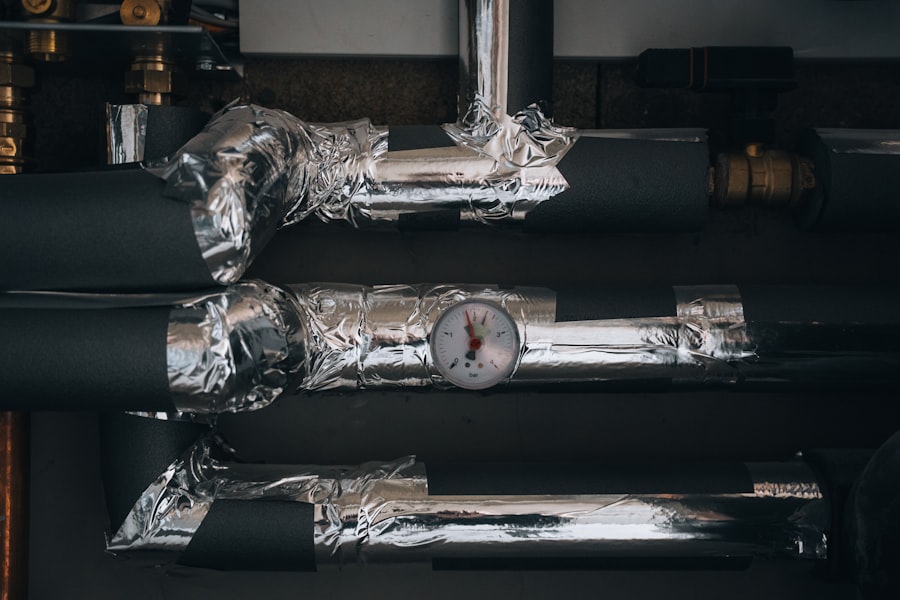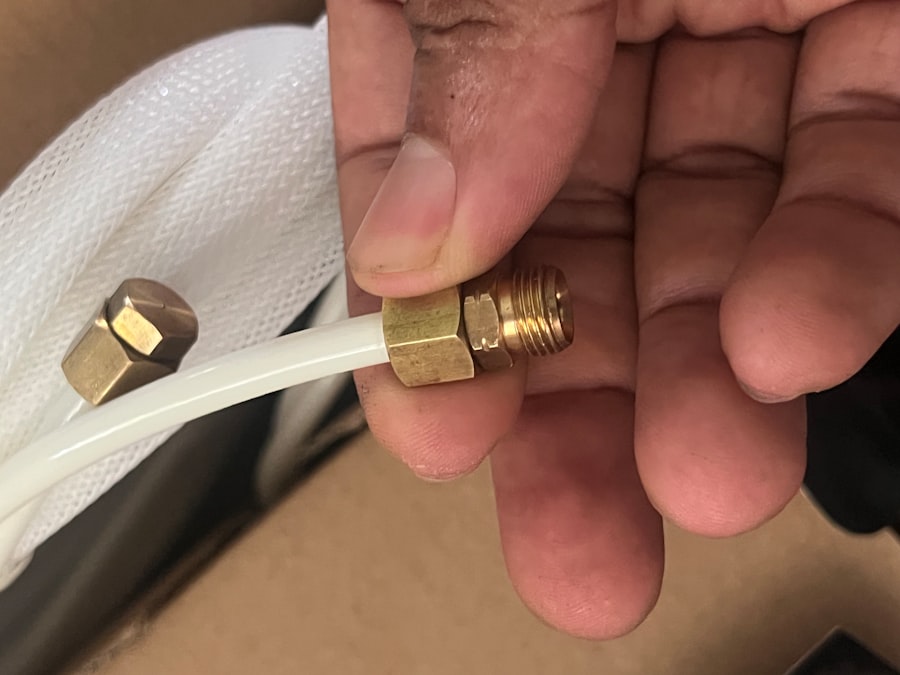In the realm of plumbing, the choice of materials can significantly influence the efficiency, durability, and overall performance of a system. Among the myriad options available, Supreme Plumbing Pipe has emerged as a leading choice for both residential and commercial applications. This innovative piping solution is designed to meet the rigorous demands of modern plumbing systems while providing exceptional reliability and longevity.
Supreme Plumbing Pipe is engineered with advanced materials that resist corrosion, scaling, and other common issues that plague traditional plumbing systems. The evolution of plumbing technology has led to the development of pipes that not only fulfill basic functional requirements but also enhance the overall quality of water delivery and waste management. Supreme Plumbing Pipe stands out due to its unique composition and manufacturing processes, which ensure that it can withstand high pressures and extreme temperatures.
As we delve deeper into the benefits, types, installation processes, and maintenance of Supreme Plumbing Pipe, it becomes evident why this product is gaining traction among homeowners, contractors, and plumbing professionals alike.
Key Takeaways
- Supreme Plumbing Pipe offers durable and reliable solutions for plumbing needs.
- Various types of Supreme Plumbing Pipe are available to suit different applications.
- Installation is straightforward with proper guidelines and tools.
- Regular maintenance ensures long-lasting performance and prevents issues.
- Competitive pricing makes Supreme Plumbing Pipe a cost-effective choice compared to other materials.
Benefits of Using Supreme Plumbing Pipe
One of the most significant advantages of Supreme Plumbing Pipe is its resistance to corrosion. Traditional metal pipes, such as copper or galvanized steel, are prone to rust and degradation over time, especially when exposed to moisture and various chemicals found in water supplies. In contrast, Supreme Plumbing Pipe is often made from high-density polyethylene (HDPE) or cross-linked polyethylene (PEX), materials that are inherently resistant to corrosion.
This characteristic not only extends the lifespan of the piping but also ensures that the water remains clean and free from contaminants. Another notable benefit is the flexibility and ease of installation associated with Supreme Plumbing Pipe. Unlike rigid piping systems that require numerous fittings and joints, Supreme Plumbing Pipe can be bent and maneuvered around obstacles with relative ease.
This flexibility reduces the number of joints needed in a plumbing system, which in turn minimizes potential leak points. Additionally, the lightweight nature of these pipes makes them easier to transport and handle during installation, ultimately saving time and labor costs for contractors.
Types of Supreme Plumbing Pipe Available

Supreme Plumbing Pipe comes in various types, each tailored to specific applications within plumbing systems. One of the most common types is PEX piping, which is widely used for both hot and cold water distribution in residential settings. PEX is favored for its ability to expand and contract without breaking, making it ideal for areas with fluctuating temperatures.
It is also available in different colors—red for hot water lines and blue for cold water lines—allowing for easy identification during installation. Another type is HDPE piping, which is often utilized for underground applications such as sewer lines and drainage systems. HDPE pipes are known for their high tensile strength and resistance to environmental stressors, making them suitable for harsh conditions.
They are also used in industrial applications where chemical resistance is paramount. Additionally, there are specialized variants like PEX-AL-PEX, which combines layers of PEX with aluminum for added strength and durability, making it suitable for high-pressure applications.
Installation Process for Supreme Plumbing Pipe
| Step | Description | Estimated Time | Required Tools | Safety Precautions |
|---|---|---|---|---|
| 1. Planning & Measurement | Assess the site and measure pipe lengths needed. | 30 minutes | Measuring tape, blueprint | Wear gloves and safety glasses |
| 2. Cutting Pipes | Cut Supreme Plumbing Pipes to required lengths. | 20 minutes | Pipe cutter, marker | Use gloves to avoid cuts |
| 3. Deburring & Cleaning | Remove burrs and clean pipe ends for proper fitting. | 15 minutes | Deburring tool, cloth | Wear eye protection |
| 4. Fitting Assembly | Assemble pipes with Supreme fittings ensuring tight connections. | 25 minutes | Wrenches, pipe lubricant | Check for proper alignment |
| 5. Pressure Testing | Test the installed pipe system for leaks under pressure. | 30 minutes | Pressure gauge, pump | Monitor pressure levels carefully |
| 6. Final Inspection | Inspect entire installation for compliance and safety. | 20 minutes | Inspection checklist | Ensure all safety standards met |
The installation process for Supreme Plumbing Pipe varies depending on the type of pipe being used but generally follows a straightforward approach that emphasizes efficiency and safety. For PEX piping, the first step involves planning the layout of the plumbing system. This includes determining the locations of fixtures, appliances, and any necessary connections to existing plumbing.
Once the layout is established, the appropriate lengths of PEX are cut using a specialized pipe cutter to ensure clean edges. After cutting the pipes, fittings are attached using either crimp rings or push-fit connectors. Crimping requires a specific tool to secure the rings around the pipe and fitting, creating a watertight seal.
Push-fit connectors offer a more user-friendly option, allowing for quick assembly without specialized tools. Once all connections are made, it’s crucial to pressure test the system to identify any leaks before covering or concealing the pipes. For HDPE installations, a different approach is taken due to the material’s unique properties.
HDPE pipes are typically joined using heat fusion techniques or mechanical fittings. Heat fusion involves heating the ends of two pipe sections until they become molten and then pressing them together to form a strong bond as they cool. This method creates a seamless connection that enhances the integrity of the system.
Mechanical fittings may also be used in situations where heat fusion is impractical or when connecting to existing systems.
Maintenance and Care Tips for Supreme Plumbing Pipe
Maintaining Supreme Plumbing Pipe is relatively straightforward due to its durable nature; however, certain practices can help ensure optimal performance over time. Regular inspections are essential to identify any signs of wear or damage early on. Homeowners should periodically check exposed sections of piping for leaks or unusual discoloration that may indicate corrosion or other issues.
For PEX pipes specifically, it’s important to avoid exposing them to direct sunlight for extended periods, as UV rays can degrade the material. Another critical aspect of maintenance involves monitoring water quality. While Supreme Plumbing Pipe is designed to resist contamination, it’s still advisable to test water regularly for pH levels and chemical composition.
If any irregularities are detected, addressing them promptly can prevent potential damage to the plumbing system. Additionally, homeowners should be cautious about using harsh chemicals in drains; opting for natural alternatives can help preserve the integrity of both pipes and fixtures.
When evaluating plumbing materials, cost is often a significant factor influencing decision-making. Supreme Plumbing Pipe generally offers a competitive price point compared to traditional materials like copper or PVWhile initial costs may vary based on local market conditions and specific project requirements, PEX piping tends to be less expensive than copper due to lower material costs and reduced labor expenses associated with its installation. Moreover, when considering long-term expenses, Supreme Plumbing Pipe often proves more economical over time.
The durability and resistance to corrosion mean fewer repairs and replacements are needed throughout its lifespan. In contrast, copper pipes may require more frequent maintenance due to their susceptibility to corrosion and scaling, leading to higher overall costs in both repairs and water quality issues.
Customer Testimonials and Reviews of Supreme Plumbing Pipe

Customer feedback plays a crucial role in understanding the real-world performance of plumbing materials like Supreme Plumbing Pipe. Many users have praised its ease of installation and flexibility, noting that even DIY enthusiasts can successfully complete projects without professional assistance. One homeowner shared their experience of replacing old copper pipes with PEX: “The difference was night and day!
Not only was it easier to work with, but I also noticed an immediate improvement in water pressure.” Additionally, contractors have expressed satisfaction with the reliability of Supreme Plumbing Pipe in various applications. A plumbing professional remarked on a recent commercial project: “We switched to using HDPE for our underground installations because it holds up so well against environmental factors. We’ve had zero callbacks since we made the switch.” Such testimonials highlight not only customer satisfaction but also the practical advantages that come with using Supreme Plumbing Pipe in diverse settings.
Where to Purchase Supreme Plumbing Pipe and How to Get Started with Your Installation
For those interested in incorporating Supreme Plumbing Pipe into their projects, several avenues exist for purchasing these materials. Home improvement stores often carry a selection of PEX and HDPE piping along with necessary fittings and tools for installation. Additionally, specialized plumbing supply retailers provide a broader range of options tailored for both residential and commercial needs.
Before starting an installation project, it’s advisable to consult with local building codes and regulations regarding plumbing systems. Understanding these requirements ensures compliance and helps avoid potential issues down the line. Once familiar with local guidelines, homeowners or contractors can begin planning their projects by measuring spaces accurately and determining the necessary materials based on their specific needs.
In conclusion, Supreme Plumbing Pipe represents a modern solution that addresses many challenges faced by traditional plumbing systems. Its benefits extend beyond mere functionality; they encompass durability, ease of installation, and long-term cost savings that appeal to both consumers and professionals alike. As more individuals recognize these advantages, it’s likely that Supreme Plumbing Pipe will continue to gain popularity in various plumbing applications across the globe.



